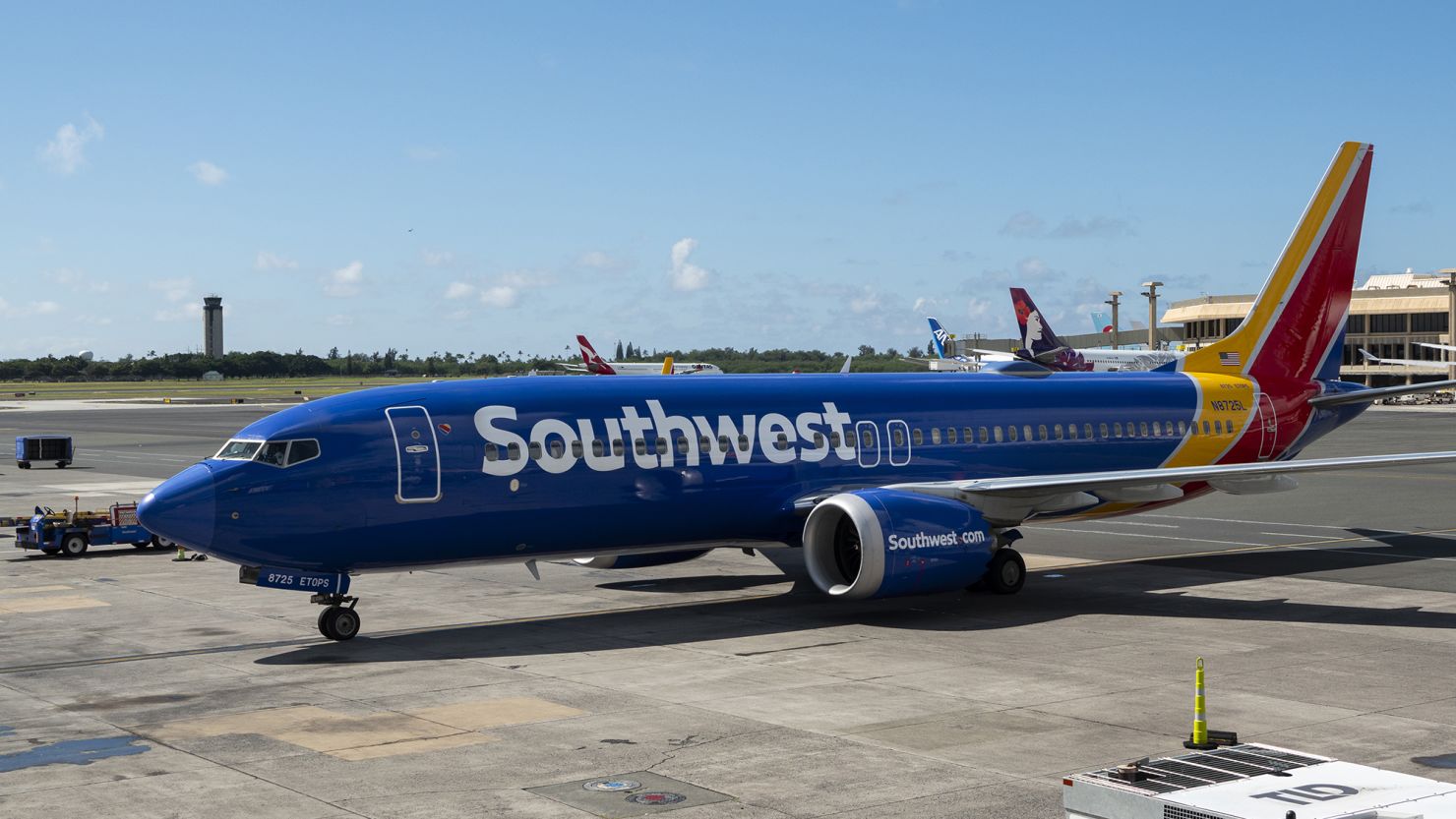Boeing reported a minor bounce back in sales in February after orders ground essentially to a halt in January following the Alaska Airlines door plug incident.
The troubled aircraft maker reported 15 commercial jet orders in the month. That’s a rebound from just three jet orders in January. But the company also had three canceled orders in January, giving it zero net orders for that month, the worst month for sales in years.
The news wasn’t all good: One of Boeing’s largest customers, Southwest, disclosed Tuesday it now expects its deliveries from Boeing to be down more than 40% from what it had planned to accept over the course of the year. That’s due to ongoing safety and quality questions about Boeing’s production line raised by the door plug incident on a January 5 Alaska Air flight that left a gaping hole in the side of the plane. Because of that, the total capacity of seats Southwest sells during the course of the year will be 1 percentage point less than it originally expected, the airline said.
Despite the challenges, Southwest CEO Bob Jordan signaled Southwest is not keen on adding planes from the other major airline manufacturer — Airbus — to its fleet. That move would be an enormous change for Southwest, which exclusively flies the Boeing 737 and in 2011 became Boeing’s first customer for the jet’s latest generation, the Max.
Southwest is making adjustments for the year. Jordan said Tuesday that the company is halting the hiring of pilots and flight attendants due to Boeing’s expectation to deliver far fewer planes to Southwest than expected this year.
“This is not business as usual,” Jordan said at a conference organized by JP Morgan. “We’re being very aggressive in controlling what we can control.”
The hiring cuts mean Southwest will hire about 50% fewer pilots and 60% fewer flight attendants than planned this year. New hire classes for both types of employees will stop in April. After growth fueled by the post-pandemic air travel recovery, Jordan said Southwest now expects to end the year “solidly down” in employee headcount.
But Jordan said Southwest is playing the long game and will deal with the delivery delays for now.
“I, and I know other CEOs, have told Boeing … get the issues understood, and get the issues fixed,” Jordan said. “Fix it. We all need Boeing to be stronger two years from now, five years from now, ten years from now. And that takes precedent over delivery delays.”
United Airlines also said recently that it would halt pilot hiring “due to continued new aircraft certification and manufacturing delays at Boeing.”
Rebound from worst month since pandemic
January had been the worst month for sales for Boeing since airlines were struggling with massive losses during the pandemic. The last time Boeing had between one and three gross orders was in June, 2020, when it had only one jet order. The last time that Boeing had zero or negative net orders was in January of 2021, when it had negative 1 net orders.
So while 15 orders in February is an improvement, it’s still sharply off from relatively strong sales it reported for 2023, as a return of passengers had airlines eager to order and take deliveries on new planes.
Boeing had 369 total net orders in December alone, a record month for the company. For the full year it had 1,456 gross orders, or 121 a month on average, and 929 of those orders coming in the second half of last year as demand picked up, for an average of 155 a month. So 15 orders booked for February showed a sharp drop from 2023 demand levels.
The company sold 10 of the troubled 737 Max jets in February, all to unidentified customers. It sold four of the 787 Dreamliner to Royal Brunei Airlines, a deal announced during the Singapore Airshow. And it sold one 777 freighter, also to an unidentified customer.
Deliveries hurt by quality questions
Deliveries were somewhat better, but also below normal output for the company. Boeing delivered 17 737 Max jets, including two each to United Airlines, Southwest and Ryanair, and one each to Air India, Akasa, flydubai, Korean Air, Sun Express, and one each to six Chinese airlines – Air China, and China Southern, Xiamen, Shandong, Donghai and 9 Air. Overall it delivered 27 commercial jets.
The deliveries to China were significant, as China had not taken any Max deliveries from Boeing for nearly five years, following a second fatal crash in March 2019 caused a two-year grounding of the plane in China. Even after Chinese airlines were cleared by Chinese aviation regulators to start flying the 737 Max jets they owned once again, the airlines there had not taken a delivery of a Max until late January, when China Southern accepted delivery of a Max.
But as Boeing deals with quality and safety issues since the Alaska Air incident, its deliveries are likely to be slowed for the rest of this year. Last year it delivered 528 commercial jets, or an average of 44 a month. The FAA has announced that it will not approve Boeing’s plans to increase production of the 737 Max until it is satisfied it has made improvement in safety and quality issues.
Southwest, one of its major customers, disclosed Tuesday that it expects to take deliveries of 46 737 Max 8 jets this year, rather than its previous plan to take 58 of those planes.
Southwest had planned to also take delivery of a total of 79 737 Max jets, but it no longer expects to get any of the 737 Max 7 jets it had hoped to get this year. That plane has yet to be certified by the Federal Aviation Administration to carry passengers and is now not likely to get that approval this year as it originally hoped.










